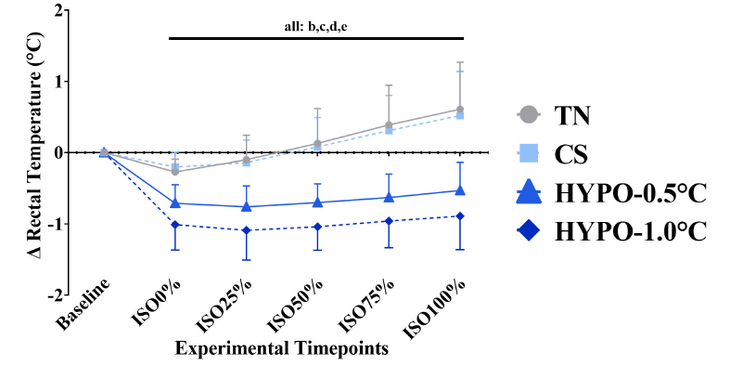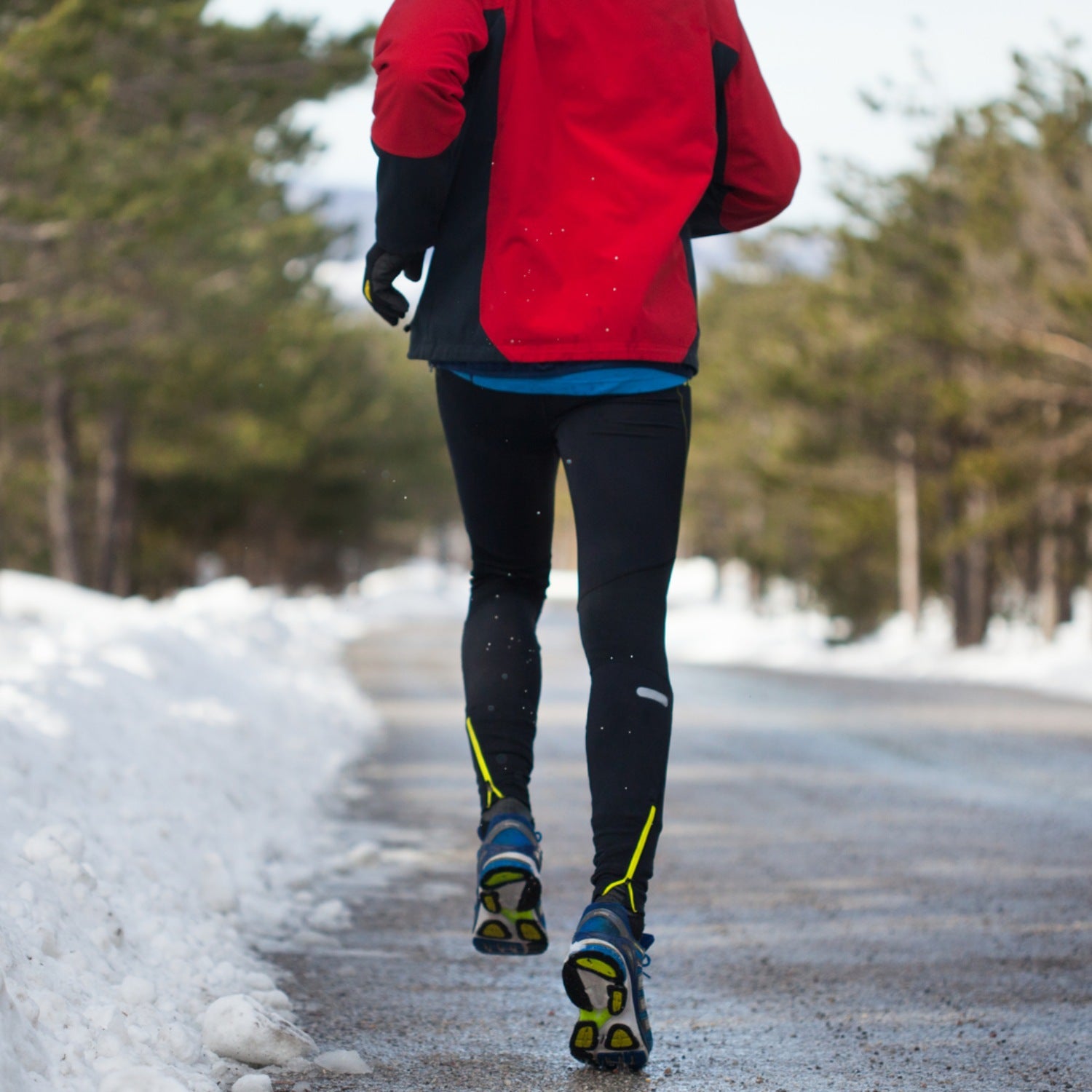The human body is an engine with efficiency similar to a car engine. In both cases, about three-quarters of the energy consumed is released as heat. That’s why it’s easy to heat the interior of a car: just blow some of that heat from the engine into the cabin. And it’s why endurance athletes worry a lot about getting too hot but mostly view cold as a minor annoyance rather than a fundamental limit on performance. If you’re pushing hard enough, you won’t be cold for long—right?
But new research suggests that cold really does diminish endurance performance. That’s contrary to what some previous research has found, but those earlier studies often involved volunteers who were ushered into a cold room and then immediately asked to exercise without waiting for their body temperatures to drop. In the new study, the volunteers got cold—and then stayed cold, no matter how hard they exercised. That’s a lesson that winter athletes will want to keep in mind next time they’re lingering in frosty air before a workout or a race.
The study was led by Phillip Wallace as part of his doctoral work in Stephen Cheung’s Environmental Ergonomics Laboratory at Brock University in Canada. Cheung is a serious cyclist whose lab has produced a bunch of interesting endurance-related research that I’ve written about previously on topics like , , and self-talk. Cold research, on the other hand, usually focuses on safety-related topics like hypothermia and frostbite.
The new study compared cycling performance in four different conditions. In the control “thermoneutral” condition, the subjects sat in a temperature-controlled chamber set at 72 degrees Fahrenheit (22 Celsius) for 30 minutes. Then they started cycling with five minutes of warm-up at 100 watts before pedaling to exhaustion at 70 percent of VO2 max, which took on average just under 24 minutes. In the “cold shell” condition, the chamber was set to 32 degrees Fahrenheit (0 Celsius) and a wind speed of about one meter per second was added. Half an hour in these conditions was enough to significantly decrease skin temperature without dropping core temperature (as measured with a rectal thermometer) before starting the cycling test.
For the other two conditions, the subjects—ten men with an average age of 27—stayed in the 32-degree Fahrenheit chamber for long enough to drop their core temperatures by 0.9 or 1.8 degrees Fahrenheit (0.5 or 1.0 Celsius) before cycling, imposing mild hypothermia. Because of differences in body size, shape, and composition, people cool at different rates, but on average it took 116 minutes to reach the first threshold. For the second threshold, the average was 160 minutes, though three of the subjects didn’t cool all the way before hitting the maximum cooling time imposed by the research ethics board. During all the cooling trials, the subjects wore a T-shirt or cycling jersey and cycling shorts plus earmuffs, winter gloves, and a fleece blanket around their shoes—added warmth that turned out to be necessary during pilot testing.
There are a bunch of reasons you might expect endurance to suffer in the cold. Even with just a cold shell, your peripheral blood vessels will constrict, decreasing the flow of oxygen to your muscles. Cold also has more subtle effects on the chemistry of how oxygen is transported in the blood. And once you start shivering, you can burn a substantial amount of energy: in this study, the metabolic heat generated by the subjects doubled from the equivalent of about 10 percent of VO2 max in the thermoneutral condition to 20 percent in the hypothermic conditions. Shivering can also interfere with muscle contraction and coordination, and may even fatigue the muscles themselves.
Despite all these negatives, previous studies with similar cycling tests at 70 percent of VO2 max found that performance in 37 to 39 degrees Fahrenheit was either or even compared to moderate temperatures. Wallace’s results with pre-cooling were dramatically different, though. Time to exhaustion on the bike dropped from 23.8 to 16.2 minutes in the cold shell condition, 8.5 minutes in the first hypothermia condition, and 6.5 minutes in the second one. The results provide clear evidence that skin cooling alone is enough to reduce endurance by about 30 percent, and core cooling takes away another 30 to 40 percent.
It’s interesting to look at how the core temperatures evolved over the course of the time trials. Here’s a graph showing changes in temperature for thermoneutral (TN), cold shell (CS), and the two hypothermia (HYP) trials:

For both thermoneutral and cold shell, core temperature rises steadily through the time trial, as you expect from running a heat-generating engine to its limits. For the two hypothermia trials, on the other hand, the curve is almost flat, even though they’re cycling at exactly the same power output in all four trials. In fact, the core temperature even decreases during the first quarter of the trial, perhaps because warm blood is being pumped to peripheral muscles and cold blood is being shunted back to the core. The nuances of how heat is stored and moved around within the body are complex, but the upshot is that even cycling to exhaustion isn’t enough to warm you up if you’ve lingered for long enough in temperatures around the freezing mark.
One variable that’s hard to control is the mental effects of sitting around in a cold chamber for several hours. Physiology aside, you have to imagine that in those trials, the subjects just wanted to go home rather than ride a bike. As expected, their pre-ride motivation was lower, dropping from an average of three on a four-point scale in the thermoneutral trial to 2.5 and 2 in the hypothermia trials. Their initial perception of exertion when they started riding was also higher: 12 and 12.5 rather than 9.5 on the Borg scale, which measures exertion on a scale from 6 to 20. But by the end of the ride, the riders hit a max of 20 in all four conditions—so it’s not like they were unable or unwilling to push themselves.
The revelation that being really cold is bad for endurance may not seem that surprising. The most interesting distinction here, I think, is between exercising in the cold and being cold before you start exercising. One of my pathological neuroses as a runner is the fear of hearing the starting gun fire while I’m still wrestling to get my sweatpants off over my racing shoes. As a result, I often strip off my warm-ups well before the start even in sub-freezing temperatures. If there’s one idea I’ll take away from Wallace’s research, it’s that I need to invest in some tearaway pants.
For more Sweat Science, join me on and , sign up for the , and check out my book .


